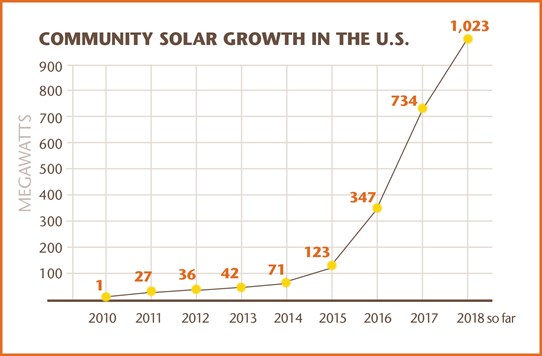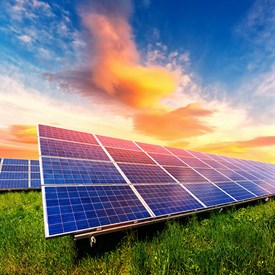
OPPD Explains Community Solar
Solar panels have been around for decades, dotting rooftops and supplying enough energy to reduce the homeowner’s utility bill and carbon footprint. Now community solar energy projects are gaining popularity for their ability to benefit neighborhoods in the same way.
As a result, a growing number of groups, companies and utilities are entering the marketplace. All of this makes community solar energy a topic worth exploring.
About Community Solar
Community solar energy expands on the concept of individual home rooftop panels. The difference is that community solar is a coordinated group effort, where the sun’s energy is gathered in dedicated areas called arrays, gardens or farms.
From there the energy is transferred to a local power grid where it supplies electricity to participating households. Participation in a community solar project is voluntary. It’s up to the consumer to choose solar if his or her utility offers it.
 Myths vs. Facts
Myths vs. Facts
MYTH: Community solar isn't a group purchasing arrangement to get discounts on individiual home solar energy systems.
FACT: Instead it is a communal project that involves land development, project management, an electrical distribution grid and subscribers who share the product.
MYTH: Community solar isn’t green power or an alternate energy program (think wind or water power) offered by utilities to customers who want to reduce their carbon footprints.
FACT: Community solar programs are generally not intended to save money, but they do reduce both carbon footprints and utility bills.
MYTH: Community solar isn’t a form of crowdfunding or financial deal that results in taxable return on investment. Consumer benefits from community solar projects are not taxable or tradable.
FACT: Each home receives the necessary amount of kilowatts to meet its energy needs.
Types of Community Solar
The term “community solar” can refer to group-owned projects or utilities owned by third parties. Either way, it is a form of photovoltaic (PV) energy. PV gets its name from the process of converting light (photons) to electricity (voltage), which is called the PV effect.
The energy collected at community solar arrays, gardens or farms is typically offered to business and households within a participating city, town or utility service area. The service arrangement is structured in one of two ways:
- Ownership, which allows people to buy panels or shares in the project. The amount of power they own is then distributed to their homes. Panels or shares can be purchased outright or financed through a loan.
- Subscription, which allows participants to buy electricity from the community solar installation. The local utility in charge of power distribution is also responsible for enrollment, administration and billing. Details vary per program, but most require no upfront fees to join, offer immediate savings and are easy to cancel.
Whether it’s an ownership or subscription arrangement, the cost of participation generally fluctuates depending on region and year, based on market prices and production expenses. No household is able to source more power than needed, and in some cases solar power may not offset all of a consumer’s energy usage.
Benefits of Community Solar
These programs offer a way for more people to go solar without having to install or maintain panels on their property. Subscribers benefit from using:
- An energy source that costs less than what they would normally pay for electricity.
- A clean, renewable power source that will decrease use of fossil fuels and reduce greenhouse gases and carbon footprint.
- A product that fuels growth by creating jobs nearly 12 times faster than the overall U.S. economy.
Solar Power in the U.S.
- 42 states have at least one community solar project.
- Minnesota produces the most community solar energy in the country, with 379 megawatts of capacity as of July 2018.
- As of March 2018, 1,023 megawatts of community solar have been brought online.
The chart below shows the progress of community solar in the U.S. since 2010.

 What’s Next?
What’s Next?
Look for more information about community solar at OPPDtheWire.com, or go to oppd.com/solarinfo to learn more.
Contact
Please email customer service with questions regarding community solar.

